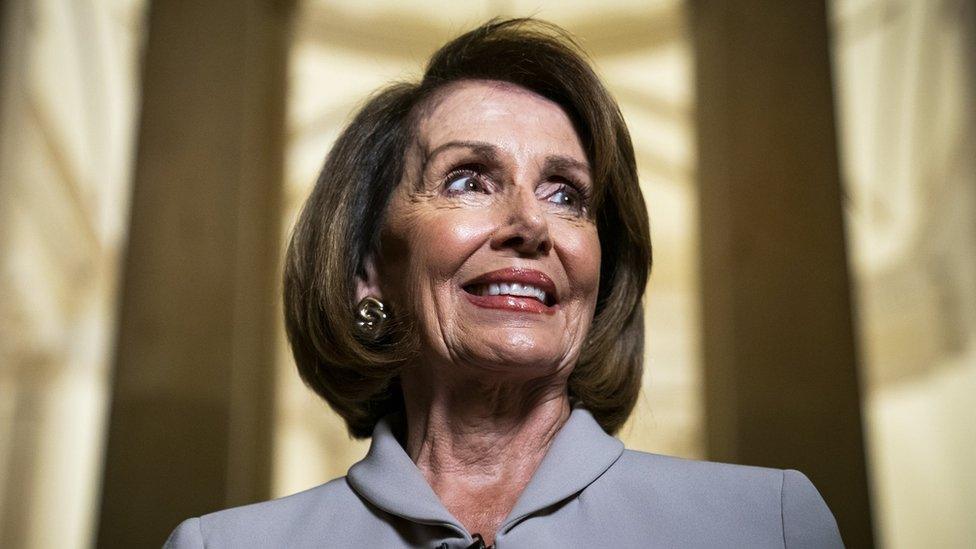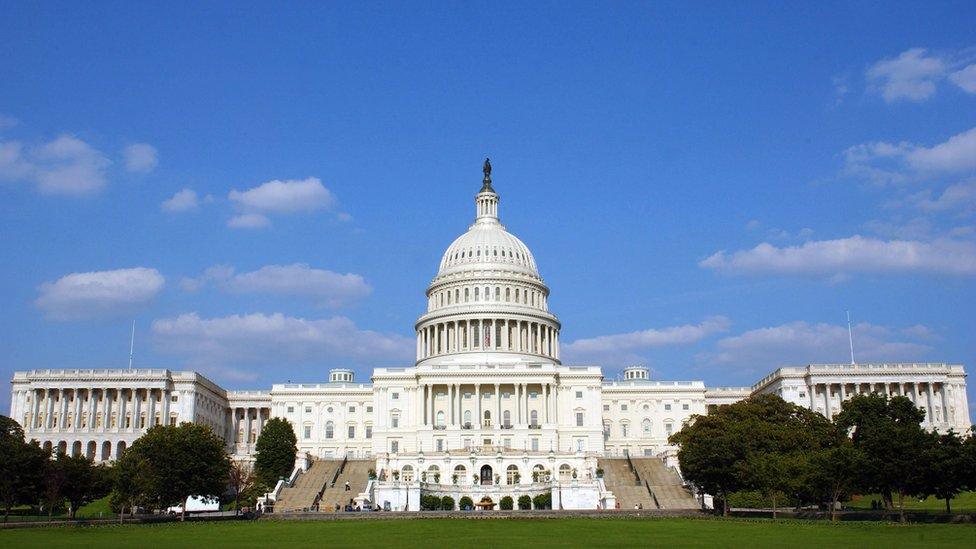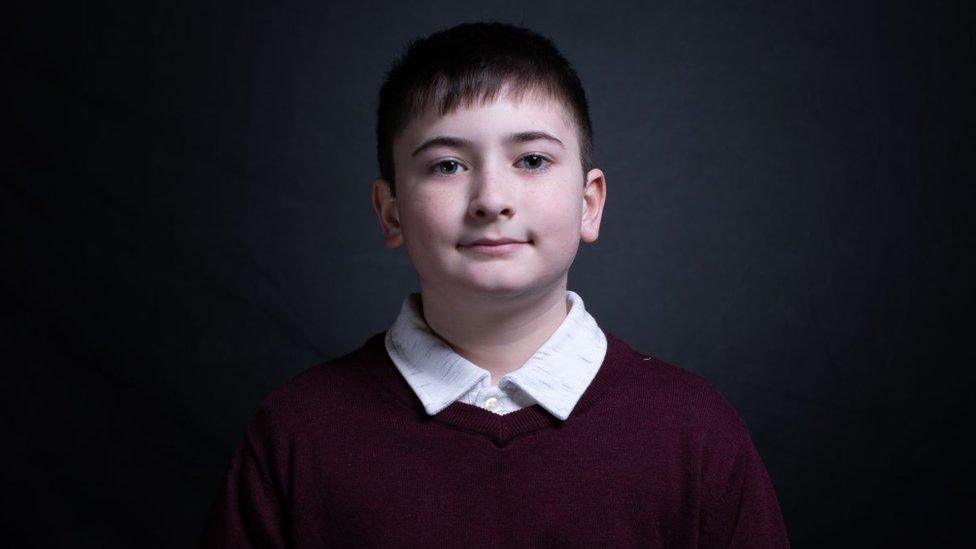State of the Union: Five facts about the famous US speech
- Published
- comments

US President Donald Trump delivers the State of the Union address in Washington, DC, in January 2018
Every year, the US President delivers a speech called 'the State of the Union address'.
It is a speech that the President of the United States gives every year to the American people, and Congress - which is the part of the government that writes and brings in laws.
The president highlights their achievements, and then sets out their plans for the country for the next year.
Every president is required to give this message "from time to time" because it's written in the US Constitution - the laws that outline the rights of the people.
Here are five facts about the State of the Union speech - one of America's major political events.
1. The first State of the Union

George Washington was the first President of the United States
President George Washington delivered the first State of the Union address in 1790.
It took place in New York, which was briefly the US capital at the time.
Washington's first address was also the shortest message in history at only 833 words long - only a little bit longer than this article.
2. Impact of the media

Woodrow Wilson, seen here on the back of a train, brought back the tradition of giving a public speech to Congress
From 1801 to 1912, US presidents sent only a written statement to Congress for their State of the Union, which was then read out for them.
President Woodrow Wilson, who led the United States into World War I, was the first president since John Adams to address Congress in person in 1913.
But in 1922, Warren Harding became the first president to broadcast his speech live on the radio - an amazing new technology at the time.
By 1947, under President Harry Truman, the State of the Union speech was shown on TV - and by the 1960s it was moved to a 9pm evening slot to gain a greater television audience. It is traditionally carried live by all major US television networks.
3. President needs an invite

Speaker Nancy Pelosi had to invite President Trump to deliver the State of the Union in 2019
The State of the Union is held in the House of Representatives' chamber in the US Capitol building.
But the president can't just show up to deliver it.
He must be formally invited by the speaker of the House of Representatives - one half of the US Congress - to appear.
On the day of the address, the House's sergeant at arms announces the president, who usually enters to a standing ovation.
At the end of each State of the Union, you can expect the president to end his speech with the phrase: "The state of the Union is strong."
4. Special guests

Joshua Trump was invited to the State of the Union in 2019 after being bullied because of his last name
The president usually invites several American citizens to the US Capitol building in Washington, DC, for their State of the Union message.
These members of the public have been invited because they have done something extraordinary.
During his speech, the president usually introduces them and honours them for their achievements.
In 2019 President Trump invited 17 people to the speech. That included an 11-year-old boy called Joshua who had been bullied because of his last name - Trump.
5. Designated survivor

The 'designated survivor' does not attend the State of the Union at the Capitol building
As is traditional when the nation's top leaders are gathered at a single location, one member of the president's cabinet does not attend the State of the Union address.
He or she remains at a secret location to make sure the government could continue if a disaster should happen that harms the president, the vice president, and the other top leader who are attending.
This person is known as the 'designated survivor'.
- Published6 February 2019

- Published24 January 2019

- Published6 November 2018

